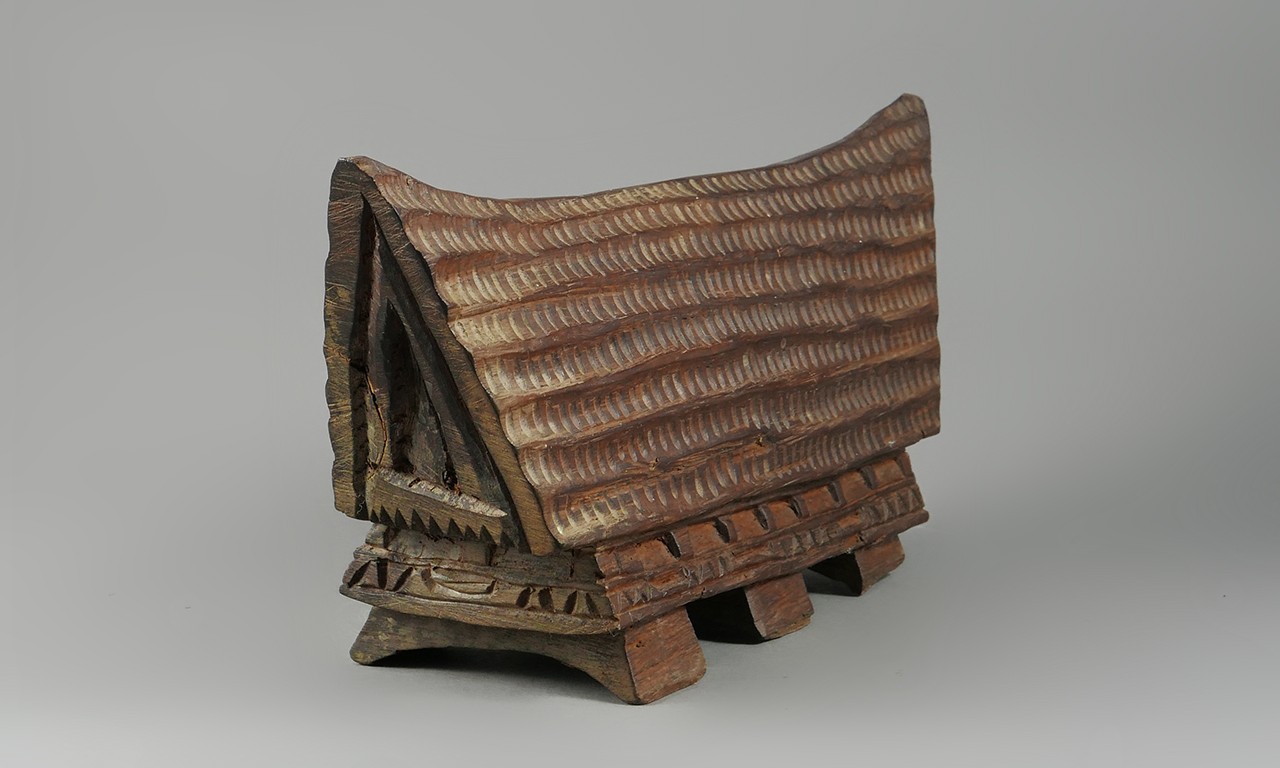 |
Bai Model, mid 20th Century
Palau, Micronesia
Wood; 5 1/4 × 3 × 11 3/4 in.
2019.17.5
Gift of Frieda O. Wray from the Estate of Dr. & Mrs. Douglas and Carolyn Osborne |
If You Lived Here, You’d Be Home by Now
People can meet one another anywhere, but almost all cultures build specialized buildings in which community members can come together to discuss pressing issues. Having achieved no small measure of success with the publication of “The Archaeology of the Palau Islands: An Intensive Survey” (1966), Dr. Douglas and Carolyn Osborne returned to Palau in 1968 in order to continue their archeological and ethnographic survey of the island country. However, they were quickly enlisted in constructing the first traditional meeting house built on the islands since before Japanese occupation. This Bowers Blog post is the second in a series on the Osborne family and looks at their small, but integral involvement in the construction of the Bai ra Ngesechel ar Cherchar of the Palau Museum (now Belau National Museum).
 |
The Osborne Family and the Ngaratabelik,1968-69
Image courtesy of Frieda Wray |
A Farewell (or Good Bai) to Arms
From 1914 to 1945 Palau was occupied by Imperial Japan. Throughout this time period, Japanese influence affected much of the country’s industrial development in fishing, agriculture, and mining. Unfortunately, Japanese rule also meant a decline of traditional Palauan customs. By the end of World War II—the conclusion of Japan’s colonial occupation of the islands—there had been severe damage to the cultural practices of Palauans. The Palau Museum on Koror was initially funded in 1955 by the post-war government of Japan as reparations for their actions. Its mission was to preserve and protect the cultural heritage and natural history of the islands. One of the first traditions that it pinpointed for preservation was the bai.
|
|
The Ngaratabelik thatching the roof of the bai, 1968-69
Image courtesy of Frieda Wray
|
Rubak to the Future
The Palauan bai is a traditional meeting house for the rubak—a chiefly male elder—and other men to deliberate on political issues such as warfare, fishing expeditions and building construction. At times the bai also served as a community center for feasts, dance festivities and other special community functions. Prior to foreign occupation, bai building was prevalent and most villages had more than one. By the late 1960s, the bai in Airai was the only remaining in the country and the knowledge of the traditional Palauan architectural construction was almost lost. Worried about the permanent loss of the tradition, the Palau Museum decided to build the Palau Museum Men’s Meeting House—known colloquially as the Bai ra Ngesechel ar Cherchar.
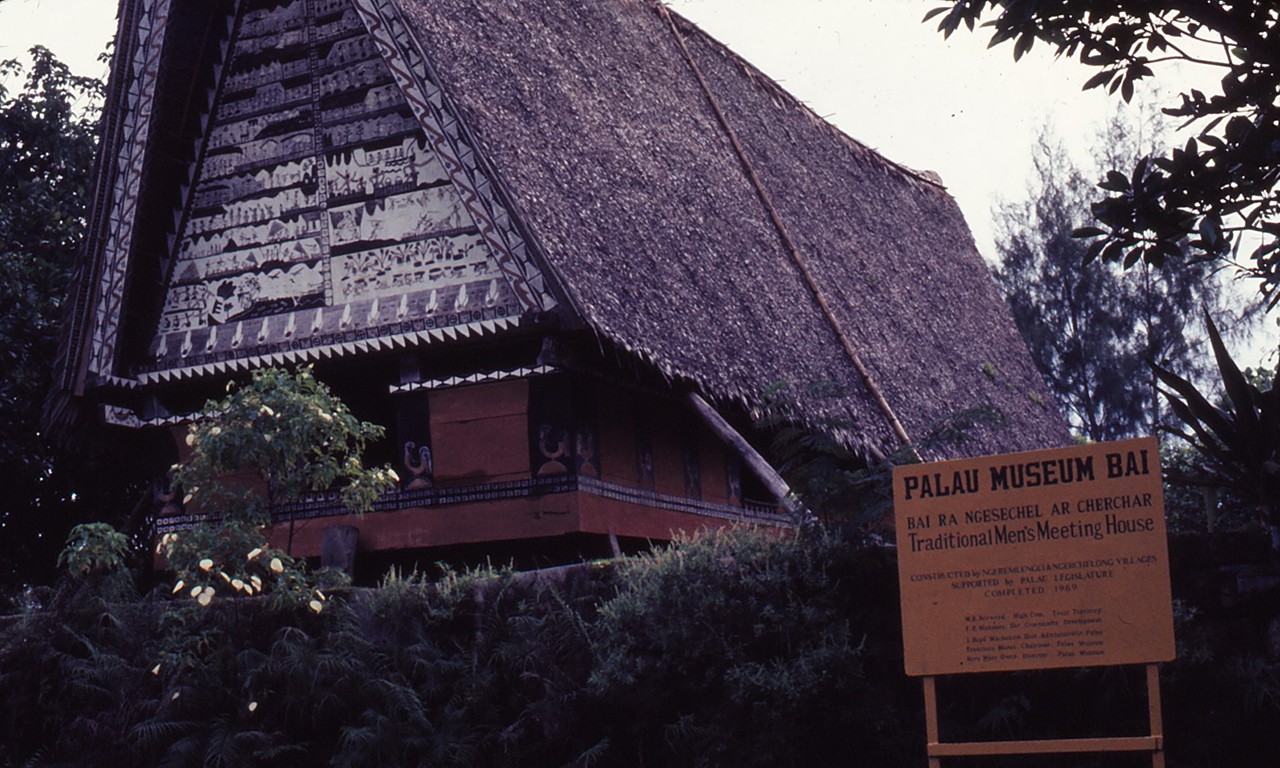 |
The Bai ra Ngesechel ar Cherchar shortly after being constructed
Image courtesy of Frieda Wray |
Osborne to Help
It was Bob Owen who first got Douglas and Carolyn Osborne involved with the Palau Museum shortly after their return to Palau in 1968. He was, at the time, the hard-drinking Staff Entomologist of the Trust Territory; husband of Hera Owen, executive secretary of the Palau Museum; and in at least one instance a white hat of sorts for defending Palau’s ecology against invasive insects. With the construction of the bai fitting so well with the Osborne’s work, the pair and their teenage daughters, Frieda and Ellen, set out to document the creation of the bai as a way of recording the cultural significance and the traditional technical development of the building. This is meticulously recorded in an unpublished monograph written by Carolyn Osborne.
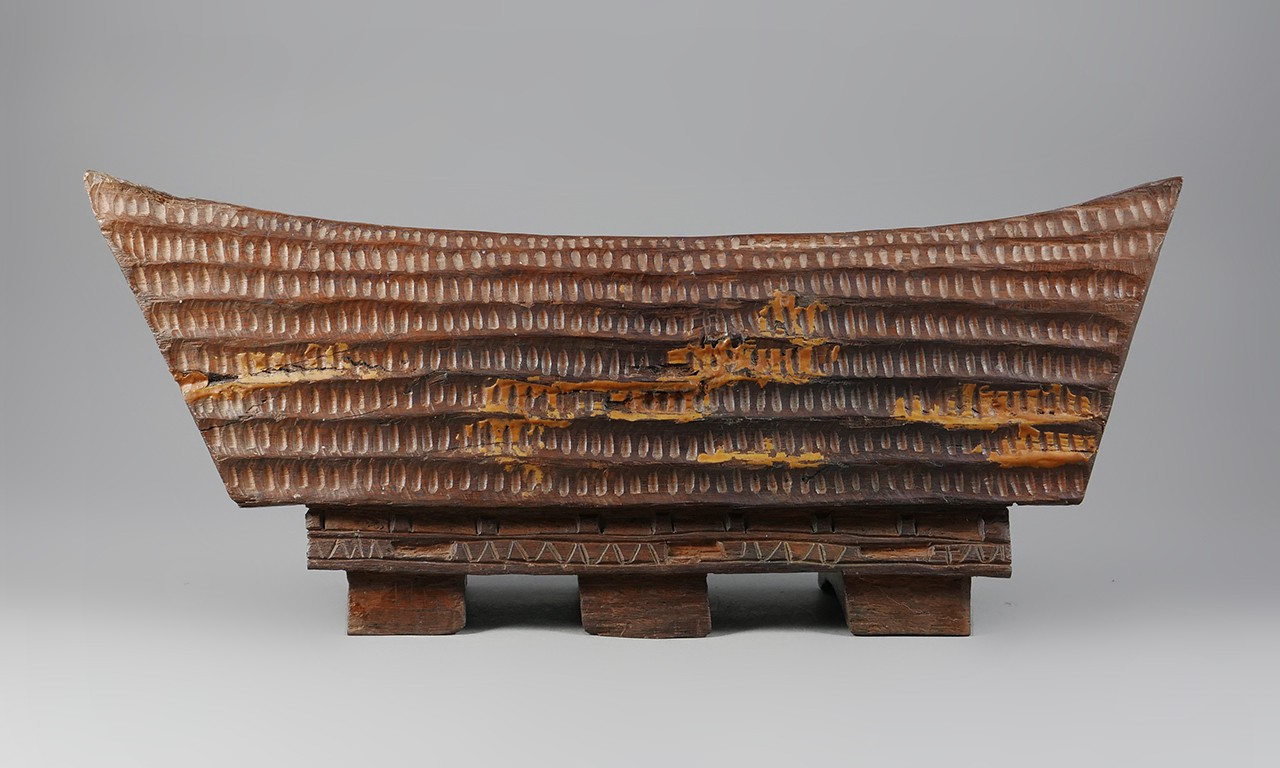 |
Bai Model, mid 20th Century
Jimmy Mtoched (Palauan); Palau, Micronesia
Wood; 5 1/4 × 3 × 12 1/2 in.
2019.17.4
Gift of Frieda O. Wray from the Estate of Dr. & Mrs. Douglas and Carolyn Osborne |
Build a Bai Workshop
The Bai ra Ngesechel ar Cherchar was primarily built by the Ngaratabelik, a men’s group from the Palauan state of Ngeremlengui. This men’s group was comprised of several experienced dachelbai, men who were skilled in creating things by hand. The entire structure of the bai—minus the roof thatching—was pre-constructed by the Ngaratabelik on the island of Babeldaob. Afterwards, the preliminary structure was disassembled and shipped on a World War II landing craft to its permanent location on Koror. There the Bai ra Ngesechel ar Cherchar was reassembled, decorated, roofed and finally ready for the dedication ceremony, to be discussed more in next week’s post. Unlike much of our first post on the Osborne Collection, this chapter of their time in Palau is well-documented in terms of objects. Within the Osborne Collection there are two wooden models of traditional Palauan bai buildings made by Jimmy Mtoched, an apprentice dachelbai, in 1969. The models are intricately carved and feature incised designs that mimic the paneling details on real bai buildings found all throughout Micronesia.
Post researched and co-written by Jessica Arellano, Volunteer for the Bowers Museum Collections Department. Text and images may be under copyright. Please contact Collection Department for permission to use. References are available on request. Information subject to change upon further research.



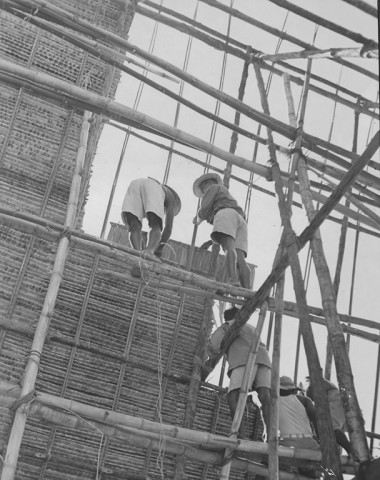
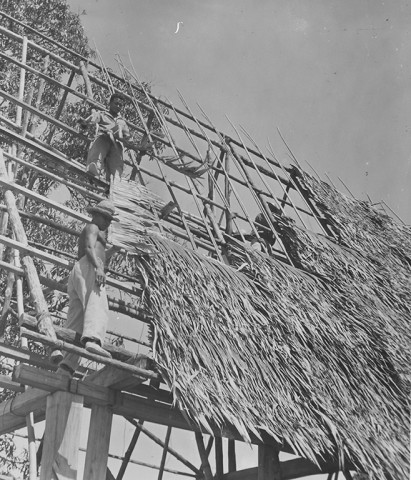


Comments